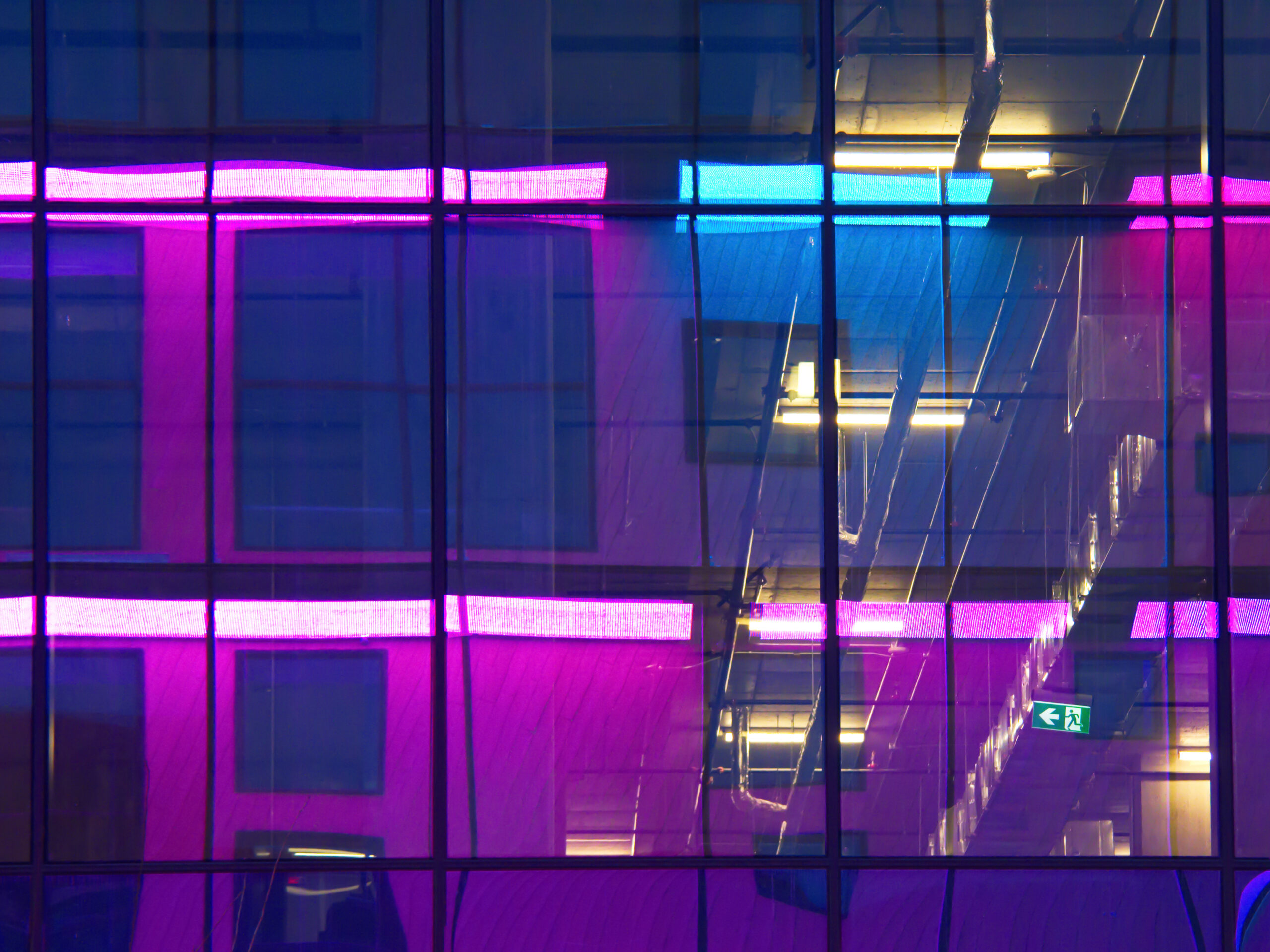Top Self-edge Denim Fabric Producers Manual
Are you aware that self-edge denim, known for its robustness and everlasting allure, is produced by talented craftsmen? The journey of self-edge denim commences with the textile producers who meticulously interlace and create this legendary denim textile. Locating the appropriate self-edge denim material producers is crucial to securing the highest quality and artistry in your denim wear.
If you’re on the hunt for the best selvedge denim, your search ends here. In this detailed handbook, we’ll take you through the leading self-edge denim textile producers, unveiling the labels that are famous for their dedication to superiority and precision. From Ironheart and Samurai to PBJ and Oldblue, we’ll delve into the top names that represent the essence of selvedge denim by the yard.
But first, let’s uncover the fundamentals of self-edge denim and understand why it has entranced denim enthusiasts and style experts alike. Discover the skill, legacy, and special characteristics that make Japanese, American, and European-made selvedge denim truly exceptional. From the fabrication technique to the different weights and attributes, we’ll discuss the selvedge spectrum and equip you with the insight to make an informed choice.
So, whether you’re a denim aficionado or starting your foray into the realm of selvedge denim, this manual will be your reliable guide in investigating the top selvedge denim fabric manufacturers and learning about the essence of this everlasting textile. Let’s begin this denim exploration collectively and find out the best that selvedge denim has to provide.
Self-edge Denim Basics: Understanding the Basics
Selvage denim is a cornerstone of excellent craftsmanship and everlasting appeal. But what exactly is selvedge denim, and what sets it apart from its counterparts? In this segment, we will explore the basics of self-edge denim, highlighting its unique traits and why it has gained such a devoted following.
Selvedge denim is a type of denim fabric crafted on vintage shuttle weaving machines, which make a sealed edge on each side of the fabric. This closed edge, characterized by the distinctive colored lines tracing the outer of the border, stops fraying edges and unraveling, resulting in a tidier, more durable material. This precise precision in the weaving process makes selvedge denim highly sought after by jean lovers.
One of the unique traits of self-edge denim is its connection to superior quality and thicker material. Makers, particularly those in Japanese, are famous for their expertise of selvedge denim production, utilizing extended cotton strands and age-old practices to produce denim that is not just strong but also possesses a rich texture and depth of character.
Understanding self-edge denim basics is essential to valuing the singularity of this textile. The next part will explore the legendary Japanese mills known for producing some of the finest self-edge denim in the market.
Legacy and Artistry: Exploring Japanese Selvage
This section examines the deep legacy and impeccable craftsmanship behind Japanese self-edge denim. Japan has traditionally been synonymous with outstanding jean making, and its mills have achieved fame in the industry. Let’s uncover some of these renowned mills and reveal the distinctive qualities that make Japanese-made denim truly exceptional.
Famous Japanese Weaving Factories
Japanese selvage attributes its fame for excellence to the expertise and dedication of its textile mills. Some of the most respected names in the field are:
| Textile Mill | Region |
|---|---|
| Amhot Mills | Okayama Prefecture |
| Kuroki Weaving Factory | Yamagata Region |
| Japan Blue/Collect Textile Mill | Kojima |
| Kaihara Textile Mill | Hiroshima Prefecture |
| Nihon Menpu Mills | Tokyo Region |
| Toyoshima Mills | Chiba Prefecture |
These weaving factories have made themselves as leaders in producing some of the finest self-edge denim in the world. Each mill contributes its own unique style and craftsmanship to the denim creation process, creating a wide array of options for denim fans.
Special Characteristics of Japanese Selvage
Japanese selvage is revered for its exceptional quality and unique traits. Here are some of the important characteristics that set Japanese-made denim stand out:
- Premium Quality: Japanese weaving factories are very proud of utilizing the highest quality materials and employing traditional techniques to produce denim with unequalled strength and wearability.
- Heavier Weight Fabric: Japanese denim is usually made using heavier weight fabrics, famous for their strength and ability to produce beautiful fades with age.
- Reputation for Excellence: Japanese-made denim is widely regarded as the ultimate example of superior jean material, sought after by denim aficionados around the world.
These unique qualities make Japanese self-edge denim a top choice among jean lovers and curators who appreciate the skill and artistry that goes into creating each denim pair.
Discovering American Selvedge: Renowned Mills and Their Backgrounds
When it comes to American self-edge denim, there are a few famed weaving factories that have left a mark on the industry. One of the most famous is Cone Mills, which is notable as being the last selvedge denim mill in the USA.
Cone Textile Mill has a storied past, tracing its roots to the late 19th century, and its partnership with Levi’s Jeans has been crucial in the acceptance of American denim. The top-tier textile made by Cone Textile Mill has been used in Levi’s jeans for generations, making it synonymous with the legacy of American denim.
Aside from Cone Textile Mill, there are other renowned American rainbow selvedge denim weaving factories that have added to the market expansion and renown. The White Oak Division, a section of Cone Mills, was famous for its premium denim before its shutdown in the late 2010s. Another renowned textile mill is Rogue Territory Mills, which has gained recognition for its artistry and dedication to making high-quality denim.
Selecting high-quality self-edge denim from these US weaving factories provides many benefits. The durability of the textile ensures that your denim wear will resist long-term use and frequent washing. Additionally, the unique fading patterns that appear over time produce a unique and one-of-a-kind style, making each jean pair unique. With American selvedge denim, you obtain excellent value for your money.
| Textile Mills | Year Founded | Key Achievements |
|---|---|---|
| Cone Textile Mill | the late 19th century | Provider of material for Levi’s |
| White Oak Division (Cone Mills) | 1905 | Known for premium denim before closure in 2017 |
| Rogue Territory Weaving Factory | 2008 | Famed for skill and top-tier denim |
Exploring European Excellence in Denim Fabrication
European selvage is famous for its exceptional craftsmanship and quality. In this segment, we focus on two Italian experts of denim production: Candiani Mills and Berto Weaving Factory. These textile mills have built a firm standing in the field for their top-tier denim textile.
Italian Experts: Candiani and Berto Weaving Factories
Candiani Mills, located in Italy, has been producing some of the top denim textile since the mid-20th century. With a devotion to environmental responsibility, Candiani Mills utilizes cutting-edge methods and sustainable methods to produce premium denim that matches the top standards.
- Their materials are famous for their gentleness, toughness, and gorgeous color patterns.
- Candiani’s European selvage is chosen by style-leading brands and discerning denim enthusiasts alike.
- They offer a variety of jean choices, from thin to thick, allowing for versatility in assorted garment styles.
Berto Weaving Factory, another esteemed Italian denim mill, has been at the forefront of denim creation for a century and two decades. With a rich heritage and dedication to traditional craftsmanship, Berto Textile Mill continues to produce top-tier denim textile that matches the highest expectations.
- Berto’s European selvage is known for its distinct character, with textured thickness and beautiful fading potential.
- Berto Mills has a wide array of denim types and surface treatments, making possible fashion experts and denim fans to produce individualized and one-of-a-kind items.
- They value eco-friendly production methods and employ eco-conscious components to minimize the environmental impact of denim creation.
Contributions from Cone Mills: America’s Denim Legacy
While uncovering European excellence, it’s important to acknowledge the achievements of Cone Textile Mill, an legendary US weaving factory, to Europe’s denim legacy. Cone Mills has been a pioneer in the denim field for more than a hundred years, well-known for its devotion to superiority and innovation.
- Cone Mills’ selvedge denim fabrics have been used by well-known denim names around the globe, highlighting the adaptability and toughness of US-made jeans.
- Their European selvedge denim options include a diverse selection of types, thicknesses, and finishes, serving the diverse needs of denim experts and denim enthusiasts.
- From traditional blue denim to new elastic versions, Cone Mills keeps to break new ground of denim creation.
Fans of European self-edge denim are spoiled for choice with the exceptional offerings from Candiani Mills, Berto Mills, and the legacy of Cone Mills. These textile mills symbolize the pinnacle of craftsmanship and showcase the devotion to superiority that has made European selvedge denim fabrics greatly desired in the fashion industry.
The Selvage Material Makers
In the realm of selvage, a wide range of makers contribute to the creation of this high-quality fabric. Each producer contributes its own style, creating a variety of self-edge jean labels. Exploring assorted makers is crucial in locating the ideal pair of selvedge jeans that match individual preferences.
Below is a detailed roster of selvage material makers renowned for their superior craftsmanship and skill:
| Producer |
|---|
| Iron Heart |
| Samurai Jeans |
| Oni Denim |
| PBJ |
| Flat Head Jeans |
| Fullcount Denim |
| Benzak Denim Developers |
| Indigofera |
| Blaumann |
| Ooe Yofukuten |
| Oldblue |
These producers have made themselves as leaders in the selvedge denim industry. Each name has its distinctive look, cut, and material makeup, meeting different needs.
Whether you’re a hardcore jean lover or a style-savvy person, it’s important to learn about the selections from assorted selvage makers to discover the ideal pair of denim that resonate with your individual values.
The Craft of Denim Knitting: The Making of Self-edge
Denim fabrication is a meticulous craft that is crucial in the creation of self-edge textile. The detailed fabrication technique includes the interlacing of threads to create the unique crosswise structure that jeans is known for.
Traditional Weaving Machines vs. Modern Looms
Two varieties of textile makers are commonly used in denim weaving: shuttle looms and modern weaving machines. Shuttle looms are traditional, slower machines that make selvedge denim. These textile makers feature a loom carriage that moves the filling yarn through the lengthwise fibers. The resulting fabric has a sealed edge, called the selvedge, which inhibits unraveling and demonstrates the craftsmanship of the weaving process.
On the other hand, high-speed looms are up-to-date, high-speed instruments that are widely used in large-scale fabrication. These looms send the weft thread across the warp threads using a sword-like device or compressed air device. While modern weaving machines are suitable for large-scale denim production, they do not make raw denim material due to their lack of closed-edge creation.
The Role of Raw Denim in Selvedge Fabrication
Untreated denim, also called unwashed or untreated denim, is vital in the making of self-edge textile. Unwashed denim is produced from cotton fibers that have not experienced any pre-treatment or treatments, keeping the original traits of the fabric.
When raw denim is knitted on loom shuttles, it makes a strong and dense fabric with a closer knit. The lack of pre-treatment permits the denim material to create distinct wear patterns and creases with age, leading to a individualized and one-of-a-kind style. This is why lovers of unwashed selvage recognize the superior and longevity of self-edge jeans.
The combination of shuttle looms and unwashed denim highlights the traditional artistry and focus on precision that goes into creating self-edge textile. Each self-edge jean pair narrates a tale through its fabricated structure and raw texture, making them a top choice among denim connoisseurs.
Unraveling the Selvedge Spectrum: Classes and Traits
In the realm of selvedge denim, types and attributes are crucial in the uniqueness of the textile. Self-edge textiles exist in a variety of weights, and each weight has its own characteristics and perks.
A common factor to consider when learning about selvage is the density of the textile. Self-edge textile types can range, and thicker types are usually linked to strength and long-lasting wear. These textiles have a closer interlacing and are more resistant to damage, making them ideal for those wanting a durable and sturdy denim pair.
Alongside thicknesses, selvage materials also provides a diverse selection of traits that enhance its desirability. One of these qualities is texture, which means the varying density or thin fibers found in the fabric. Slubby selvedge denim has a bumpy and irregular surface, giving an element of uniqueness and visual interest.
Texture is another key trait of self-edge textiles. According to the weaving technique used and the kind of threads, selvedge denim can have a rough or soft surface. The feel of the fabric influences the general appearance and touch of the denim, producing a special handling feel.
Fading potential is another feature to think about when learning about selvage materials. Certain types of self-edge textiles are known for their outstanding color changes, enabling the fabric to display use and develop distinct designs with age. This feature adds to the uniqueness of selvage materials and the tale it narrates through its appearance.
Overall, the self-edge range covers a diverse selection of thicknesses and features, enabling individuals to pick the textile that is most suitable for their needs and preferred feel. Whether wanting durability, feel, or color changes, selvedge denim provides a wide array of selections to explore.
Key Features to Consider When Choosing Selvedge Denim
When it comes to choosing the ideal pair of selvedge denim jeans, evaluating crucial aspects can be crucial. Two important factors to consider are material thickness and strength.
Material Thickness and Strength
Material thickness determines the density and robustness of the denim material, directly impacting its strength and longevity. Heavier weight selvedge denim, usually between 14 to 21 ounces, tends to be stronger and resistant to wear and tear, making it an ideal option for people seeking denim that can withstand tough conditions and offer durable comfort.
The toughness of self-edge jeans is improved by the dense knit of the fabric. The employment of classic loom shuttles creates a denser weave, resulting in a tougher textile that can endure repeated washes and daily wear.
For those who prefer a lighter weight option, self-edge jeans with a less dense textile, ranging from 10 to 13 ounces, gives a easier and airier wear. While lighter weight denim may not be as sturdy as thicker choices, it still holds a good amount of toughness and can create distinct wear patterns and character as it ages.
Wear Pattern Formation and Fabric Traits
One of the key features of selvedge denim is its capacity to form distinct fades that reveal the owner’s activities and habits. Color changeability means the textile’s likelihood to wear in and form unique designs and color variations with repeated wear and washing.
Textile character is another important trait to take into account when selecting self-edge jeans. This means the unique aesthetic qualities, such as roughness, twisted surface, and irregularities in the weave. These characteristics add to the distinctiveness of the textile and can make each pair of jeans original.
Whether you want a more subtle and uniform fade or a striking and distinct design, grasping the wear pattern formation and fabric traits of selvedge denim can assist you choose a material that aligns with your unique look and ideal visuals.
Fabric Weight and Durability
| Fabric Weight | Strength |
|---|---|
| Dense (14-21 oz) | Tough, perfect for tough conditions |
| Less dense (10-13 oz) | Tough enough with a more comfortable fit |
Eco-Friendly Practices in Self-edge: Sustainable Creation Techniques
In the world of selvedge denim, environmental responsibility has become an growing concern of green production. Buyers are now more mindful of the planetary burden of the items they buy, and the jean market is no outlier. To address these challenges, textile makers like Candiani Mills have risen to be leaders of eco-friendly self-edge making.
Candiani Textile Mill, recognized as the leading green textile mill in the market, is dedicated to using eco-friendly manufacturing approaches. The weaving factory emphasizes lowering water usage, cutting down on chemicals, and using advanced techniques to realize a eco-friendlier manufacturing approach. By adopting these practices, Candiani Mills aims to make jeans that not just matches top-tier criteria but also aligns with the beliefs of eco-aware buyers.
It is vital for shoppers to select carefully and back labels and producers that emphasize environmental responsibility. By selecting eco-friendly self-edge jeans, individuals can contribute to a eco-friendlier jean market. Together, we can promote the use of eco-friendly techniques throughout the production process and support a eco-friendlier era for denim creation.
| Perks of Green Selvage |
|---|
| 1. Minimized water use |
| 2. Reduced chemical use |
| 3. Minimized planetary burden |
| 4. Backs fair production methods |
| 5. Fits green-minded buyer beliefs |
Jean Advancements: Merging Heritage with Modernity
This section of the piece delves into the exciting world of jean advancements that smoothly merge heritage with current advancements. Denim material, a classic and beloved fabric, has continued to evolve to fit the needs of modern style while remaining faithful to its roots.
Current Advancements in Denim Material
With innovations in material science, denim manufacturers have been able to boost the effectiveness and durability of their textiles. Advanced weaving techniques, such as the employment of shuttle weaving machines, create a tighter, denser weave that results in a tougher and resilient denim. This more than extends the life of the textile but also enhances better fades and special surface.
Fabric treatments have also been important in improving denim material. Specialized treatments, such as biological cleanings and coating techniques, can make a range of looks, from faded and aged appearances to sleek and polished styles. These techniques provide flexibility to traditional denim, enabling a wider range of creative choices and shopper wants.
Innovations in Green Manufacturing
In addition to contemporary improvements in denim material, the market has achieved major progress in green manufacturing. Realizing the need to reduce its footprint on the planet, jean makers have been looking into sustainable color applications and using the use of recycled materials.
By using sustainable dyeing processes, such as bubble dyeing or natural blue pigment, producers are lowering water and power usage while still creating deep and enduring colors. The employment of reused substances, such as repurposed threads or synthetic threads, aids lessen the requirement for fresh components and diverts textile waste from landfills.
This commitment to green manufacturing secures that denim production can continue to thrive without harming the condition of the environment. As the field evolves, using both classic artistry and cutting-edge technology, a eco-friendlier and conscious way to denim creation will become the new norm.
Modern Enhancements and Environmental Sustainability in Denim
| Modern Enhancements | Environmental Sustainability |
|---|---|
| Advanced weaving techniques | Eco-friendly color applications |
| Textile techniques | Utilization of repurposed substances |
The table above demonstrates the contemporary improvements in denim textiles and the corresponding breakthroughs in eco-friendliness. It demonstrates the ongoing efforts of the field to combine tradition and technology with green techniques, guaranteeing a better and more sustainable future for denim material.
Summary
After learning about the universe of self-edge textile producers, it is evident that there is a diverse selection of options available to denim enthusiasts. From famous labels like Iron Heart, Samurai, and Oni Denim to Flat Head Jeans, Full Count, and Indigofera Prima Jeans, each producer contributes their distinctive look and craftsmanship to the market. When it comes to choosing the perfect maker, it is crucial to think about individual preferences and the preferred appearance and comfort of the denim.
In addition to the wide range of manufacturers, the advantages of premium raw selvedge denim cannot be disregarded. Its long-lasting nature, superior wear patterns, and high value for your investment make it a worthwhile investment for denim fans. Moreover, eco-friendliness is crucial in the denim industry, and many makers are employing green methods to creation, such as Candiani Mills, famous as the leading green textile mill in the industry.
Lastly, the denim field persistently changes by combining history with innovation. Modern enhancements in denim material, such as cutting-edge knitting methods and textile techniques, improve the performance and strength of selvedge denim. Innovations in green manufacturing, such as sustainable color applications and the utilization of repurposed substances, add to a eco-friendlier denim field.
In summary, discovering the universe of selvage material makers offers a diverse selection of options and allows people to find the ideal pair of denim wear that align with their individual needs. From the advantages of top-tier unwashed selvage to green creation and denim progress, there is a lot to explore and enjoy in the realm of selvedge denim. So, take the time to learn about and choose wisely to appreciate the classic look and quality of self-edge jeans.



